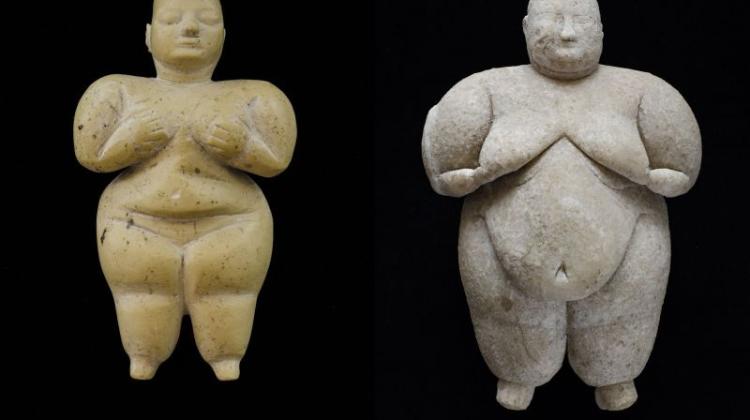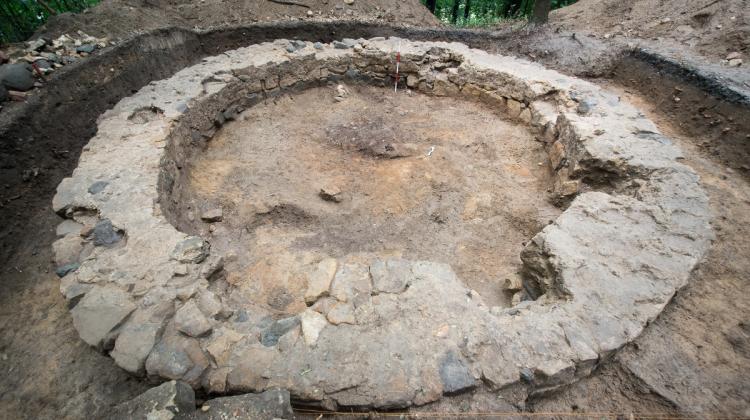Archaeologists discovered 17th century water collection systems on the Holy Cross Mountain

An extensive water collection, the oldest parts of which date back to the 17th century, uncovered archaeologists in the close of the monastery on the Holy Cross Mountain. According to scientists, the discovery sheds new light on ways the monks coped with water shortages in the past.
19th-century documents from the time when the monastery housed there Tsarist prison speak of the huge water supply problems of the Benedictine monastery on the Holy Cross Mountain. However, the problem existed long before, as evidenced by recent discoveries of Kielce archaeologist Dr. Czesław Hadamik.
"As part of the research we explored the grounds of the monastery close, courtyard surrounded by 15th-century cloisters" - told PAP Dr. Hadamik . In the central part there is a stone lining, at first glance looking like a well. "In fact, it is the upper part of a vast cistern underneath the courtyard. The lining itself is based on four stone pillars" - he explained. " The bottom of the reservoir is based on the solid rock. The chamber was dug in weathered rock" - said Hadamik who went down into the interior of the cistern.
The reservoir collected mainly rainwater and groundwater. " It was probably built during the monastery renovations conducted by abbots Bogusław Raduszewski and Stanisław Sierakowski. It was a reservoir with dimensions of approximately 4.5 by 5 m, located 5.3 m below the courtyard surface. It is tightly enclosed with stone and rubble on all sides"- explained Dr. Hadamik.
This is the first part of the system, which was intended to provide sufficient water for dozens of residents of the monastery and for the needs of the "paradise garden" maintained by monks in the close. "Later , in the 18th or early 19th century, auxiliary brick reservoir was built on the eastern side, with the bottom measuring 1.2 by 2 m, 1.3 m high in the highest point" - he said. The more recent chamber was connected to the main tank with a channel, "on the principle of communicating vessels" - said the archaeologist.
According to calculations by the researcher, the system could hold about 35 cubic meters of water for the needs of the monastery. He estimated that it was sufficient to survive longer periods of water scarcity and drought.
Archaeologists also managed to uncover much newer parts of the system. Probably in the late nineteenth and early twentieth century, "tub" filled with gravel grit was built, connected at least to four corners of the close. It collected rainwater. Gravel layer acted as a filter, supplying purified water to the tanks.
"We have uncovered the system for collecting and storing water, expanded over three centuries. Similar solutions have never been discovered anywhere else" - added Hadamik.
According to the Annals of Jan Dlugosz, the Benedictine abbey was founded in 1006 by King Boleslaw the Brave. The research of historians (including Prof. Marek Derwich) suggests that it was founded a little later, in the twelfth century. The founder was probably Bolesław III Wrymouth. During the reign of the Jagiellonian dynasty, the Holy Cross was the most important shrine in Poland.
The monastery in the Holy Cross Mountains was named after a fragment from Christ\' Cross which was supposedly enshrined there. In time, the name was extended to the entire area of the region, and in 1999 it became the name of one of the 16 Polish provinces.
Since the 1930s, the monastery hosts are monks of the Congregation of the Oblates.
Every year, the place is visited by approximately 300 thousand tourists. In February 2013, Pope Benedict XVI has bestowed upon the church of St. Trinity on the Holy Cross the title of minor basilica. It was one of the last decisions taken during his pontificate. The decree of the Holy See in this matter was solemnly read out on June 16.
PAP - Science and Scholarship in Poland
mjk/ ls/ krf/ mrt/
tr. RL
Przed dodaniem komentarza prosimy o zapoznanie z Regulaminem forum serwisu Nauka w Polsce.


















